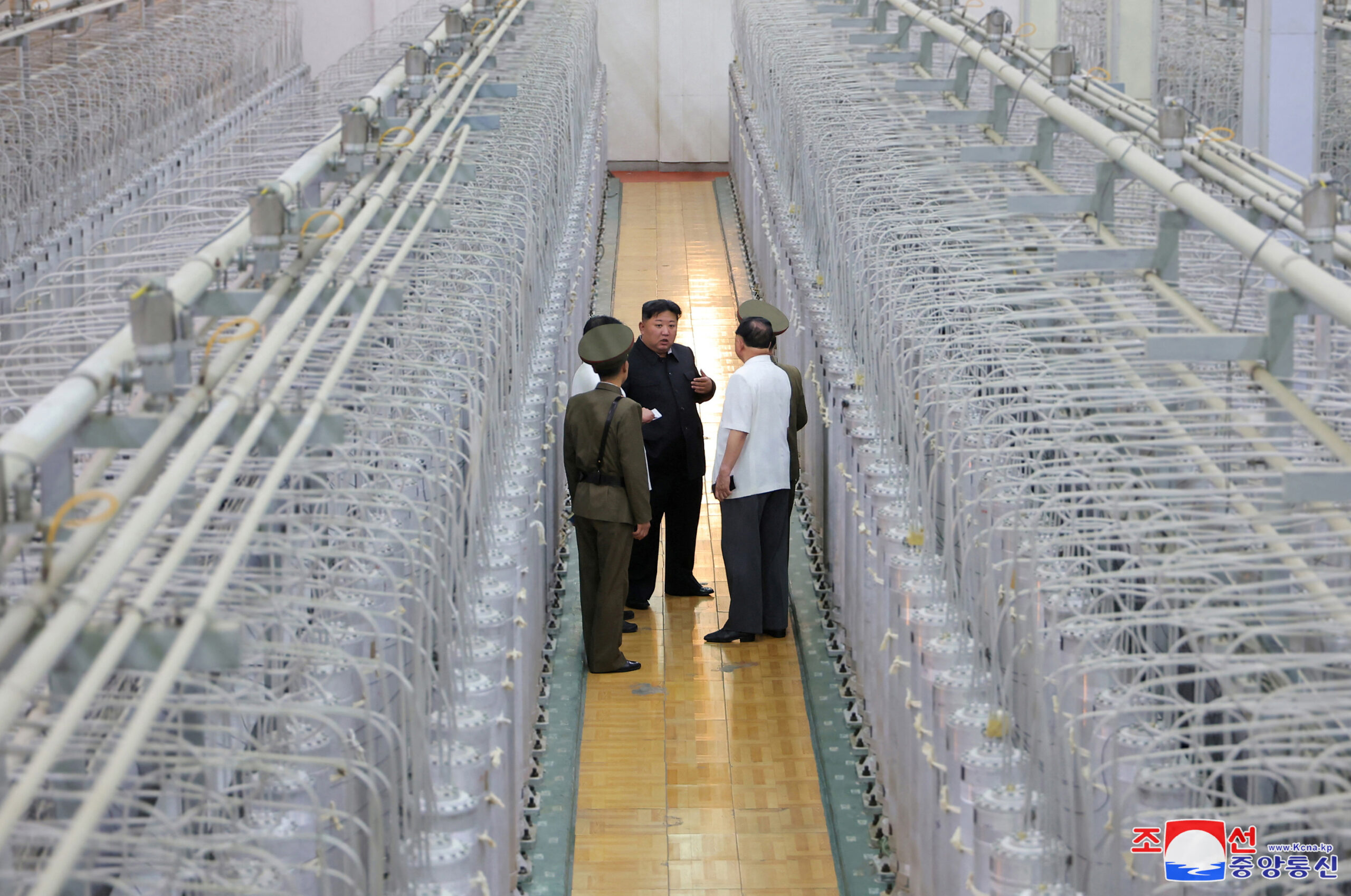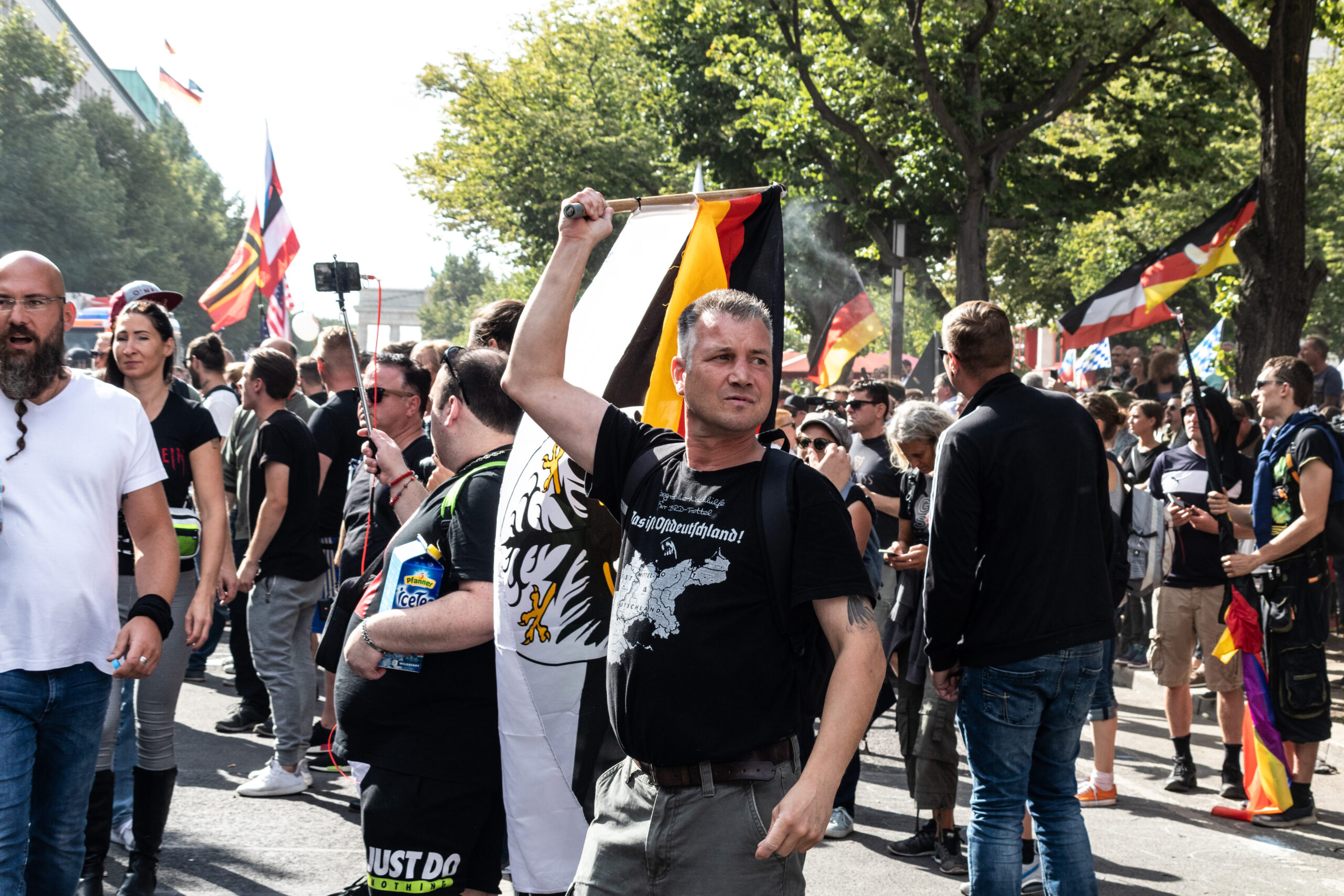By Linus B. Höller. MA Candidate in Nonproliferation and Terrorism Studies at the Middlebury Institute of International Studies at Monterey and the Moscow State Institute of International Relations.
This paper was produced as part of the “Strategic Export Controls” class taught by Prof. Robert Shaw at MIIS.
Introduction
North Korea, officially the Democratic People’s Republic of Korea, has been subject to export controls and sanctions for much of its existence. Since its first nuclear test on October 9, 2006, these have reached an unprecedented level and developed an international character, making the East Asian nation of 24 million arguably the most-sanctioned country in history. The restrictions on trade with the DPRK extend from military items over dual-use technologies to luxury goods and sand. While strategic trade controls are usually relatively closely defined (save for catch-all clauses), the broad range of items restricted for trade with the DPRK should collectively be considered strategic trade controls as they aim to achieve strategic goals. First and foremost, the abolition or at least limiting (or knee-capping) of the country’s WMD programs.
These trade controls are imposed and enforced by various actors, including the international community, led by the United Nations Security Council, over multilateral trade control regimes and by national governments and agencies. There is considerable overlap between many of these individual actors’ lists and prohibitions. However, some differences exist in rules, implementation and enforcement – i.e., willingness to look the other way.
A key resource for researchers evaluating the DPRK’s efforts to circumvent these trade controls has, for the past 15 years, been the Panel of Experts established by the UN Security Council Resolution 1874.[1] The panel issued regular reports outlining in great detail the status of UN-imposed sanctions against the DPRK and the country’s progress on its prohibited WMD activities. In light of Russia’s preventing the panel’s mandate from being renewed in 2024, spelling the end of these valuable reports, this essay hopes to present a (somewhat superficial) snapshot of the status of strategic trade controls regarding North Korea at this inflection point.
Current Observations and Trends
Key Actors
Although the DPRK plays an insignificant role in global trade due to its teetering and inefficient economy and closed-off nature, there is a wide variety of global players when it comes to the current web of strategic trade controls implemented against the country for its WMD (primarily nuclear, but also chemical and biological) programs, missile programs and for its human rights abuses and other concerns.
The United Nations Security Council is the key player. Its decisions are legally binding on all UN Member States, and it has implemented successively harsher sanctions on the DPRK since 2006.[2] By extension, the Council’s five permanent members – and veto powers – have an outsized role in determining the extent to which international sanctions are imposed and maintained on Pyongyang.
The U.S., one of the P5, plays a significant role on its own, too, as it maintains sanctions on the DPRK that go beyond the UNSC resolutions. Due to the country’s position as the world’s largest economy and undisputed banking center, its ostensibly national-level strategic trade controls have knock-on effects globally and often act in a standard-setting manner for much of the rest of the world, especially Western-aligned governments.
On the flip side, China – which, as one of the P5, has agreed to all existing UNSC sanctions – is historically the DPRK’s largest trade partner, particularly since the collapse of the USSR. Over 90% of the DPRK’s (legitimate) trade is with China.[3] The country plays a key role also in Pyongyang’s efforts to circumvent sanctions, hosting countless North Korean nationals and front companies.[4] Simultaneously, the country controls the DPRK’s by far longest and most porous external border and, therefore, is also crucial in determining the effectiveness of UNSC resolutions that are passed. Beijing is commonly assessed as being not too thrilled about Pyongyang’s WMD programs but seeing a stable North Korea as being in its national interest to prevent a wave of refugees and to maintain a buffer between it and American troops in South Korea.[5]
Russia, also one of the P5, has seen one of the most significantly changed roles in the past few years. Since the collapse of the USSR, Moscow has had lukewarm but not particularly close relations with Pyongyang. This has changed since Russia invaded Ukraine in 2022. NK Pro’s delegation tracker has counted 11 Russian visits to North Korea since 2020 and 15 visits by the Koreans to Russia. This makes it North Korea’s number-one diplomatic partner by a lot. China has hosted seven visits and sent five delegations in the same period.[6] With a stalemate in Ukraine and rapidly depleting stocks, Russia has also started importing weapons from North Korea in breach of UN Sanctions, as was reported by the Center for Nonproliferation Studies[7] and the most recent (and last) report of the Panel of Experts.[8]
The EU, being one of the three global economic powers and with considerable regulatory clout, is also a significant player in the North Korea question, although somewhat less so than the aforementioned actors. The EU maintains its own strategic trade controls on the DPRK, but those tend to be mostly in line with UN and U.S. lists.
Latest Trends
The underlying aim of the international community’s imposition of sanctions – to make Pyongyang reconsider its nuclear weapons development – has resoundingly failed. Kim Jong-Il and his son and North Korea’s current leader, Kim Jong-Un, have dramatically advanced the country’s nuclear capabilities and continue to expand them. This includes practically all aspects of a full-fledged WMD program, including the continued production of fissile material, the further development of the nuclear warheads (including miniaturization) and the further development of delivery systems – missiles – including increasing their range, developing submarine-launch capabilities, working on hypersonic glide vehicles, etc.
The sanctions, coupled with North Korea’s state ideology of Juche – self-reliance – mean that the country has also made significant strides in the indigenization of supply chains for its WMD and other military programs. North Korea’s WMD program got started with imported technologies – tangible and intangible – ranging from its reactors to its rocket engines and centrifuges. However, it appears that nowadays, it is much less reliant on importing goods that will raise obvious red flags as dual-use items or as having purely military applications.
With Kim Jong-Un’s heavy emphasis on scientists and domestic scientific advances, intangible technology transfers – which are also much more challenging to track – may be of more prominent concern in the future. Cooperation between foreign and North Korean universities and academics, for instance, on subject matters such as materials sciences, nuclear and aerospace engineering, etc., may seem ostensibly peaceful but could serve to further Pyongyang’s WMD programs. Recent work on complex technological problems, such as turbofans for cruise missiles, may suggest even more direct foreign assistance on military projects.[9]
Instead, North Korea may attempt to import raw materials that may be easier to source for being more readily available and less strictly surveilled. Many of these materials will also have plausible civilian usages, which may enable Pyongyang and its foreign partners to claim exemption from certain strategic trade controls, especially in friendly countries with more lax restrictions. The Chinese company Sinotruk, for instance, has repeatedly exported civilian trucks to North Korea, some of which were later spotted at a September 2023 parade having been repurposed into mobile missile launchers.[10]
Russian investment into a multimodal port facility in Rason in the mid-2010s, including a rail link to Russia, shows that there is undoubtedly interest for trade by non-Western countries; a recent appearance of Coal, Russian cargo ships and freight trains in satellite imagery after more than half a decade of dormancy suggests that trade of commodities in and out of North Korea has resumed following sanctions compliance and the 2020 COVID-induced complete shutdown.[11]
Indeed, in an era of high geopolitical tensions and perceived multipolarity, the “anti-Western” coalition surrounding Russia, China and Iran will play a significant role in the future of global trade controls regarding North Korea. Western actions and pressure certainly are impactful but will hardly have any chance at being successful if said coalition turns a blind eye or, as increasingly appears to be the case, feels it can benefit from trade with North Korea in categories that are currently limited by international sanctions. At the time of writing, Russia in particular – now a pariah state itself – appears to be an emerging player seeking to forge close ties with North Korea despite global concerns about the country’s behavior.
Unlike strategic export controls, strategic trade controls also include control over what comes out of North Korea rather than just what goes in. This merits an entire paper of its own, especially as this appears to have become the primary focus of enforcement in the past years. North Korean sanctions evasion techniques have increasingly focused on exporting prohibited items and sending DPRK personnel abroad to earn foreign cash for the government. This ranges from logging operations in Siberia[12] to the use of thousands of IT workers on forged documents working on freelancing platforms.[13] [14]
Finally, some valid debates may arise about the usefulness and wisdom of or need for sanctions on North Korea. The broad strategic trade controls have undoubtedly contributed to the country’s dire humanitarian situation and appear to have had limited impact on its ability to further its non-peaceful aims.[15] On the other hand, it is impossible to accurately assess what the counterfactual would have looked like; sanctions may still have been – and may still be – an effective way to significantly curtail Pyongyang’s ability to threaten global peace and security.
Conclusions
While this paper can serve only as a cursory and superficial overview of some of the latest trends in DPRK-related strategic trade control matters, it nonetheless intends to highlight some key trends that will likely shape what seems to be a new era in North Korea’s trade relations. A possible breakdown of international cooperation on UNSC sanctions driven by Russia’s invasion of Ukraine and proven willingness to shield North Korea from international action could have a dramatic impact and is already shaping up to be a new era of opportunity for Pyongyang to obtain what it needs for its program and proliferate what it can abroad for cash and support. New techniques and a changing network and profile, coupled with less oversight in the wake of the Russian veto on the Panel of Experts, will pose more acute challenges for tracking and enforcement in the years to come for those still maintaining strategic export controls. It will be up to national governments and, even more so than before, civil society to fill in the gap left behind by the Russian veto.
Title image: Kim Jong Un tours a uranium enrichment centrifuge hall in September 2024. Image: KCNA
[1] United Nations Security Council, “Resolution 1874 (2009)” (New York, June 12, 2009), https://documents.un.org/doc/undoc/gen/n09/368/49/pdf/n0936849.pdf?token=4Xx0FYcwdVm6c6OkGm&fe=true.
[2] United Nations Security Council, “Resolution 1718 (2006),” October 14, 2006, https://documents.un.org/doc/undoc/gen/n06/572/07/pdf/n0657207.pdf?token=vDu19uollhrQ7zhk15&fe=true.
[3] Katharina Buchholz, “Infographic: Who Is North Korea Trading With?,” Statista Daily Data, June 26, 2023, https://www.statista.com/chart/10683/north-korea-trading-partners.
[4] Original research, unpublished. Based on UNSC Panel of Expert reports.
[5] Chenjun Wang and Richard McGregor, “Four Reasons Why China Supports North Korea,” The Interpreter, accessed April 24, 2024, https://www.lowyinstitute.org/the-interpreter/four-reasons-why-china-supports-north-korea.
[6] “NK Delegation Tracker,” NK PRO, accessed April 24, 2024, https://www.nknews.org/pro/nk-delegation-tracker/.
[7] Jeffrey Lewis, “Russia Buys North Korean Missiles,” Arms Control Wonk Podcast, accessed April 24, 2024, https://html5-player.libsyn.com/embed/episode/id/29521218/height/100/width//thumbnail/no/render-playlist/no/theme/custom/tdest_id/544855/custom-color/a1c4d4.
[8] United Nations Security Council Panel of Experts, “S/2024/215” (New York, March 7, 2024), https://documents.un.org/doc/undoc/gen/n24/032/68/pdf/n2403268.pdf?token=iZXqFF5ym57SfWjyeH&fe=true.
[9] United Nations Security Council Panel of Experts.
[10] Own research for the James Martin Center for Nonproliferation Studies, Unpublished
[11] Own research for the James Martin Center for Nonproliferation Studies, Unpublished
[12] North Korean Labor Camps (VICE News, 2011), https://video.vice.com/en_us/video/north-korean-labor-camps-part-17/566841374fe425b03b5fce50.
[13] Own research for the James Martin Center for Nonproliferation Studies
[14] United Nations Security Council Panel of Experts, “S/2024/215.”
[15] United Nations Security Council Panel of Experts.


